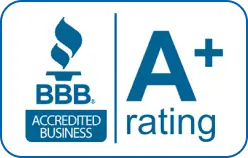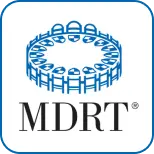A collateral assignment can sometimes be confusing, but it’s a helpful tool for securing loans. At its core, it involves using a life insurance policy as collateral, providing assurance to the lender that their risk is minimized. In this setup, the lender becomes the assignee of the policy, allowing them to claim the policy benefits if the borrower defaults on the loan.
Many people may not know that this method can make securing a loan easier and more secure. The collateral assignment agreement is crucial because it outlines the terms and gives the lender the right to receive policy benefits up to the amount of the outstanding debt. This type of arrangement is especially common with life insurance policies, making them a practical choice for borrowers and lenders alike.
While this sounds straightforward, there are various factors to keep in mind, such as the potential legal and tax implications for both parties involved. Borrowers need to ensure that they fully understand the terms of the agreement including any potential underwriting requirements to avoid conflicts down the line.
Key Takeaways of What Is a Collateral Assignment?
- Collateral assignment allows borrowers to use a life insurance policy as loan collateral, giving lenders claim to benefits if the borrower defaults.
- This method is often used as an alternative to a home equity loan or other loans, especially when the borrower wants to avoid using physical property.
- Unlike an unsecured loan, this approach provides added security to the lender while allowing the borrower to retain ownership of the policy.
- Policy loans and withdrawals may still be available under an existing policy, but they should be reviewed carefully to avoid affecting repayment or beneficiary payouts.
- Working with a financial advisor ensures that decisions around collateral assignment, assignment of life insurance, and income planning align with long-term financial goals.
Understanding Collateral Assignment
A collateral assignment is a useful tool when taking out a loan, as it involves using an asset, like a life insurance policy, as security. This ensures the lender receives payment if the borrower defaults.
Definition and Purpose
A collateral assignment involves a borrower using their life insurance policy as security for a loan. It assigns the policy’s death benefit to a lender to cover any outstanding loan amounts if the borrower passes away. This legal agreement safeguards both the lender and borrower. The borrower keeps ownership rights but promises the lender priority claim on the policy’s death benefit until the loan is repaid.
Often seen in business loans, collateral assignments use life insurance to give borrowers access to larger loans. This arrangement must comply with applicable laws, ensuring fair enforcement. By doing so, the lender has reduced risk, and the borrower can leverage existing assets for financial needs.
Key Characteristics
Collateral assignments have specific traits that set them apart. The borrower remains the policyholder, maintaining control over the policy. However, the lender is the assignee of the loan amount. Unlike a complete transfer, the agreement stays in place until the loan is repaid.
If the borrower repays the loan, the collateral assignment is nullified, and full policy benefits revert to the designated beneficiary. The agreement limits the lender’s claim only to the unpaid loan balance. It is important for involved parties to clearly detail these terms in the contract.
Types of Collateral
Collateral for assignments doesn’t only consist of life insurance policies. Various asset types can secure loans through such agreements. Property, valuable items, and financial instruments may also serve as collateral, depending on the loan type.
In the realm of life insurance, the death benefit acts as collateral. The borrower designates this portion of their policy to reassure the lender of their capacity to repay the debt. Different types of collateral bring varied advantages and reverberations, so understanding each type’s implications is essential for all parties involved.
The Collateral Assignment Process
Collateral assignment involves several important steps. It starts with agreeing on terms between the lender and borrower, supported by proper documentation. The value of the collateral is assessed to ensure it matches the loan’s requirements.
Initiation and Parties Involved
The process begins when a borrower decides to use their life insurance policy as collateral. The borrower and the lender, also known as the collateral assignee, are key parties involved. Initial discussions revolve around the terms of the assignment, such as which assets or properties will be used.
The borrower needs to fill out a collateral assignment form. This form is used to officially assign rights to the lender, allowing them to claim insurance benefits if the borrower defaults on a loan. The original note of the loan agreement is crucial as it defines the loan’s terms and conditions.
Documentation Required
Proper documentation is critical for a successful collateral assignment. The borrower must submit the collateral assignment form along with their life insurance policy details. This ensures all parties agree on roles and obligations.
It often involves submitting a copy of the original note, which outlines the loan’s specifics. Lenders might use a virtual underwriter to assess risks and verify information. Having complete and accurate documents helps avoid any disputes later on.
The Appraisal of Collateral
Before finalizing a collateral assignment, an appraisal of the collateral’s value is necessary. This ensures the asset’s worth adequately covers the loan amount. For a life insurance policy, this involves evaluating the policy’s cash value or death benefit.
Lenders typically require a professional appraisal. This provides confidence that the collateral is sufficient and reduces their risk. By accurately assessing value, both parties can ensure the assignment is fair and equitable.
An appraisal supports the lender in determining how much they can loan against the policy. This step helps avoid over commitment and ensures that the borrower’s obligations can be met.
Life Insurance as Collateral
When using life insurance as collateral, a policy can serve as collateral security for loans. This involves specific processes that ensure lenders have claims on the policy’s value if the borrower defaults. It’s essential to carefully evaluate the life insurance policy and understand how beneficial interest is assigned during a collateral assignment.
Evaluating a Life Insurance Policy
To use a life insurance policy as collateral, it’s crucial to examine the policy’s details. The policy must have a sufficient cash value or maturity benefit to cover the loan amount. Not all life insurance policies qualify. Permanent life insurance policies, like whole life or universal life, are commonly used due to their cash value accumulation.
Evaluating involves checking the policy’s terms and speaking with an insurance representative. The borrower must ensure that the policy value meets the lender’s requirements. This step includes assessing premiums, potential policy lapses, and understanding ongoing costs. This preparation helps avoid any complications during the loan process.
Assignment of Beneficial Interest
The assignment process involves legally transferring some rights of the life insurance policy to the lender. This is known as collateral assignment, and it gives the lender a beneficial interest. If the borrower defaults, the lender can claim the amount due from the policy’s proceeds. The borrower still retains ownership and control over the policy.
This process must be clearly documented and agreed upon by all parties, including the insurer. It’s essential for all involved to understand their obligations and rights. Proper documentation prevents misunderstandings, ensuring the borrower knows the extent of their obligations while the lender has security in the borrowed funds.
Frequently Asked Questions about What Is a Collateral Assignment?
How Does a Collateral Assignment of a Life Insurance Policy Work?
In a collateral assignment of life insurance, the policyholder uses the policy as a way to back a loan. The lender becomes the first in line to receive any policy benefits if the policyholder defaults on the loan.
Which Financial Institutions Tend to Accept Life Insurance Policies As Collateral?
Banks and other large financial institutions often accept life insurance policies as collateral. These institutions include a mix of traditional banks and life insurance companies looking to secure their investments with reliable assets.
What is the Main Purpose of Assigning a Life Insurance Policy As Collateral?
The main purpose is to provide assurance to lenders. By assigning the policy, the borrower assures the lender that they will be compensated, even if there are financial setbacks.
How Does a Collateral Assignment Differ from an Absolute Assignment?
A key difference is control. In a collateral assignment, the policyholder retains ownership, while the lender has claim over the benefits. An absolute assignment transfers complete ownership to another party entirely.
Conclusion and Summary of What Is a Collateral Assignment? How It Works
Choosing to borrow money using a life insurance policy through a collateral assignment opens up flexible options for individuals and businesses alike. Whether you’re looking to finance a new venture, cover a short-term need, or explore alternatives to a traditional home equity loan, leveraging your existing policy can offer meaningful advantages. However, it’s important to understand that this decision comes with obligations, particularly when it comes to repayment and ensuring that your beneficiaries receive what’s intended after your entire life is considered in the plan.
Unlike an unsecured loan, where no loan collateral is required, assigning a policy gives lenders confidence that they will recover the loan balance if you can’t fulfill your commitment. A collateral assignment of life insurance, also called an assignment of life insurance, legally prioritizes the lender’s interest. Still, it allows the policyholder to build cash value and even access policy loans under certain conditions. This structure can be particularly effective when the lender accepts such arrangements as a substitute for other loans with higher interest rate burdens.
Because every situation is unique, it’s wise to speak with a financial advisor from a experienced life insurance company before making a final decision. They can help you weigh your income goals, assess if a withdrawal from the policy makes sense, and determine how to best save or use the funds without putting your loved ones at risk. Exploring how to use life insurance to finance a loan doesn’t just require good documentation, it requires a clear understanding of how your policy fits into your broader financial strategy.
trusted by 5,000+ clients
Get Personalized Quotes Tailored to Your Company’s Needs














